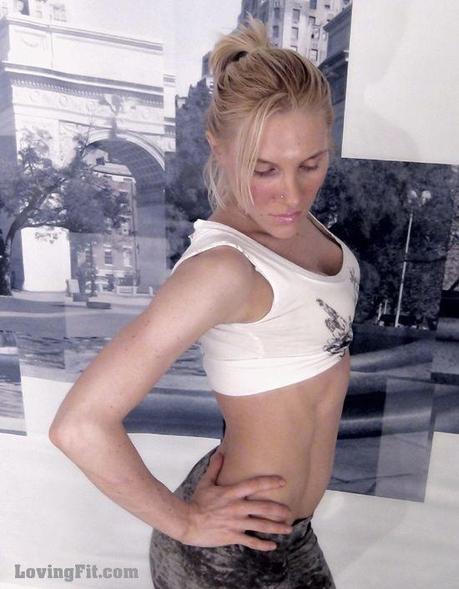
Plyometrics is my favorite type of Cardio Workout, not only because it comes from Russia, but because it’s a great way to burn fat and build muscle.
Dr. Yuri Verkhoshansky is credited for creating the principle of Plyometrics which was called “shock training” at the time.
Back in Moscow when I was a figure skater, we trained using Plyometrics every day, this is where I first learned how to workout. Plyometrics Is pretty much any type of explosive jumping, don’t be scared when I use the word explosive.
This type of workouts is widely used in sports training, because it not only increases your explosive strength but your agility and coordination.
You don’t have to be an athlete to incorporate Plyometrics into your workout. In fact, I consider it better cardiovascular workout than anything else. Any other type of cardio workout will actually burn your muscle off, but Plyometrics help you develop more muscle. This is the secret of all the athletes
What I like the best about this type of training is the convenience of it. You can do it anywhere any time and get an incredible workout.
The very popular Plyometric Training is box jumping, and you can set up higher boxes as you progress. But box jumping is not the only way to incorporate Plyometrics, and the actual plyometric boxes are very pricey.
My personal favorite is Vertical leap and Skater jumps. Vertical leap is a very hard exercise to perform in a perfect form and it takes a some practice. Vertical leap is pretty much a squat jump, but you are using your arms, swinging your arms back on the squat and raising them over your head on the jump. Always keep your back straight and locked, and warm up at least 10 to 15 minutes.
Skater jumps are a bit more advanced. If you ever watched figure skating you know that after they perform a jump, they land on one leg with the other extended behind. This is a starting position for a Skater Jump, then you jump up bringing the back leg forward bended and your arms up. So you are helping your self to jump as the back leg goes up together with arms.
These are just two tiny examples of Plyometric Exercises, here are some other examples with animations.
I also really love the Jump over. Place an object such as step board or anything you can jump over, and jump back and forth using interval training method.
If you are a complete beginner start by jumping over small objects, you can also do mini jump squats and jump lunges. Then you can eventually progress to doing Vertical Leaps and Skater Jumps, you can also increase the height of the objects.
As you get more and more advanced you can also implement a medicine ball. I love the intensity a medicine ball can bring together with Plyometrics. This will take your workout to a whole new level.
When doing Plyometrics, always land on the balls of your feet, keeping your abs tight and engaged at all times, like with any other exercise. Another thing that I cannot stress enough about is learning the Proper Form of each Exercise. No matter what you do, you have to first learn the correct way to do it, to prevent your self from getting injured.
After working out with Plyometrics allow at least 48 hours for recovery.
PS – I know the picture above has nothing to do with Plyometrics but my camera doesn’t take good action shots ( I tried

I will be leaving out of town for two days, but I will be back with some pictures from my trip to post in My Diary, so you can keep getting to know me better

Tatianna

